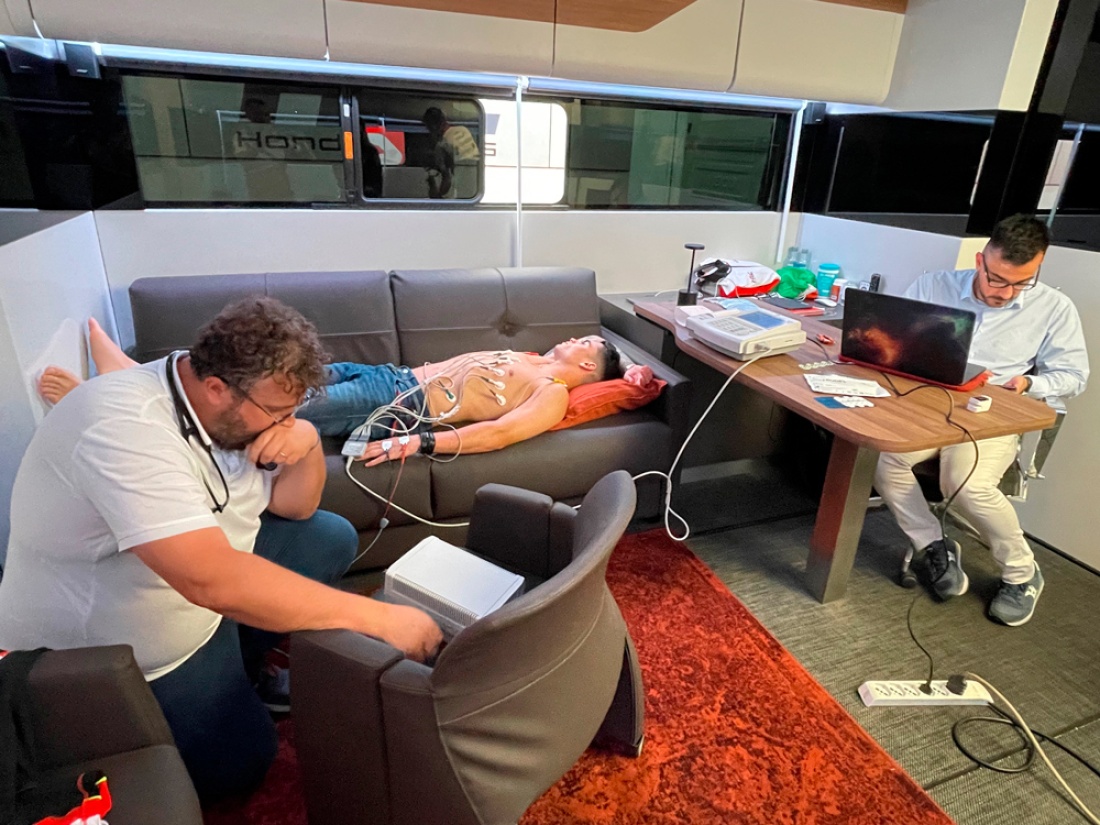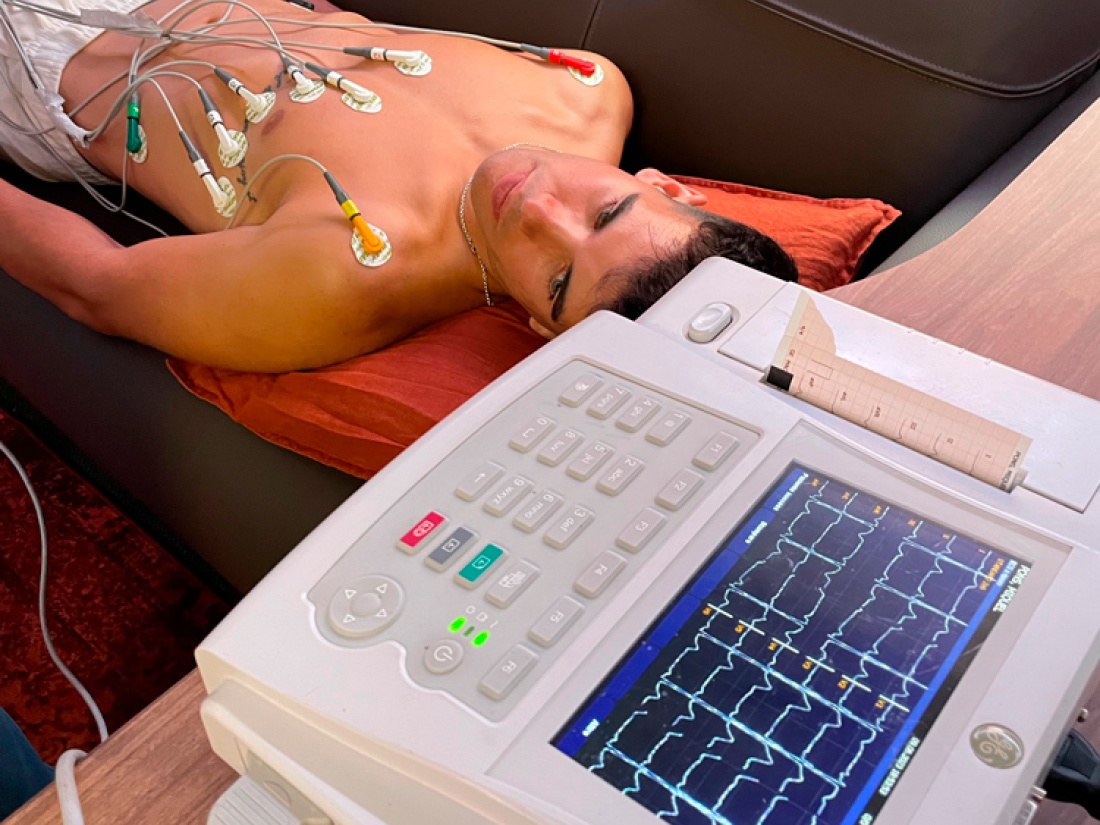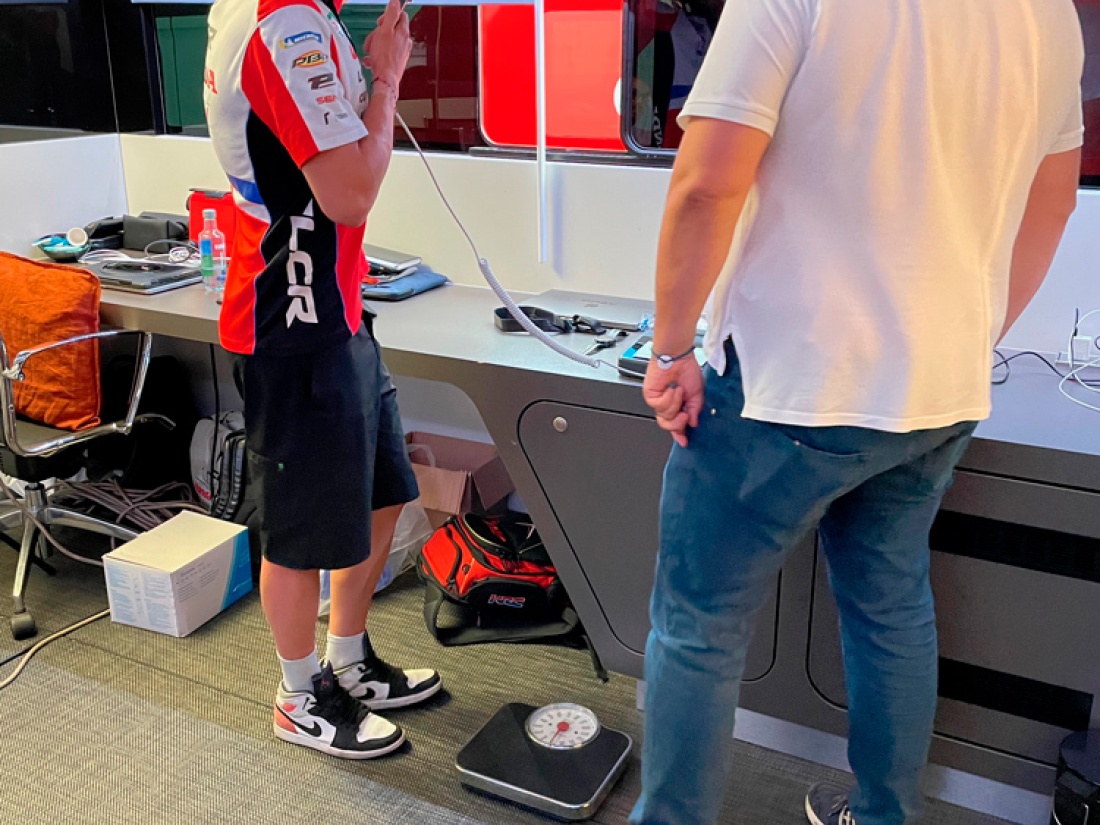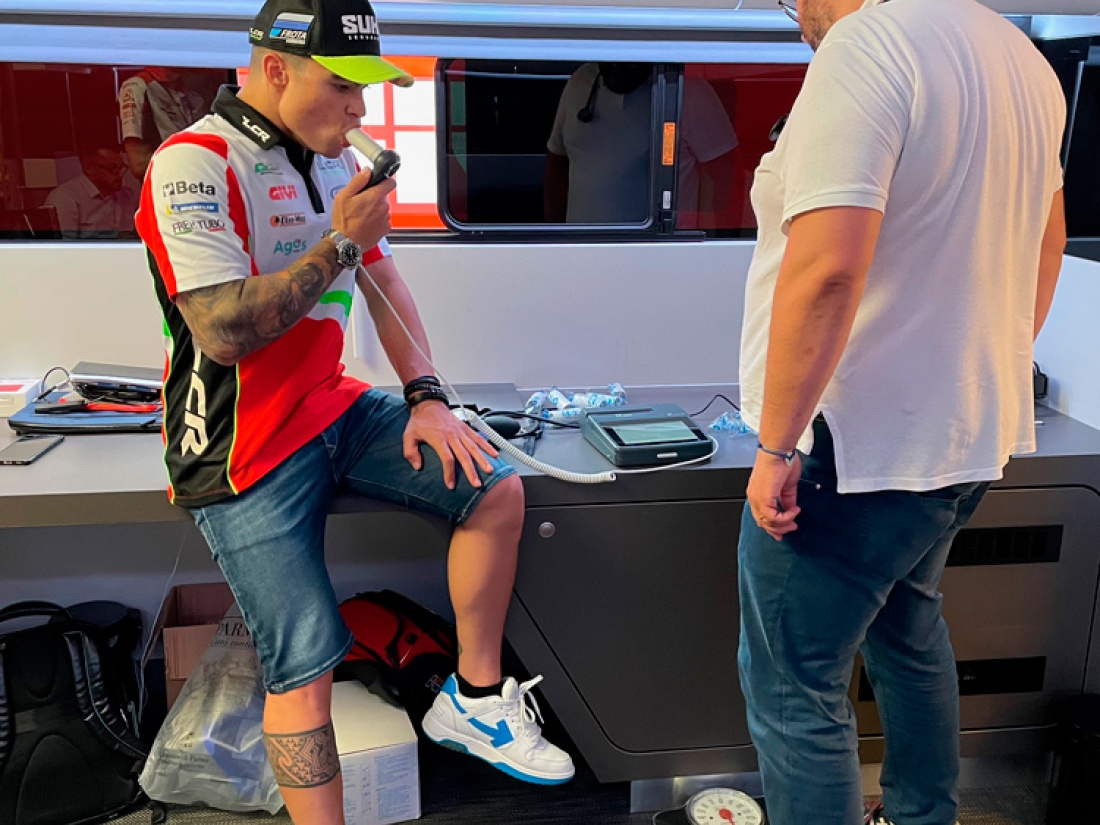flow-meter™ and LCR Honda together for a new scientific project
flow-meter™ and LCR Honda together for a new scientific project that aims to study in athletes the effects of fatigue during high-performance racing, breathing problems and the effects of CO2 re-breathing inside the helmet during sports performance.
The tests were conducted by Dr. Michele Zasa, Resuscitator Doctor, Medical Director at Clinica Mobile nel Mondo Srl, for years involved in the MotoGP and Superbike paddock, and Dr. Arnel Hajdarevic, Surgeon Specialist in Sports Medicine.
The tests were carried out in June 2023 during the Mugello GP on riders Alex Rins and Takaaki Nakagami (LCR Honda MotoGP) and riders Eric Granado and Miquel Pons (LCR E-Team MotoE) and in August 2023 during the Austrian GP.
Dr. Zasa explains the details of the project.
What is the purpose of this project?
The purpose of this observational scientific work is twofold: firstly, to carry out a multi-parametric collection of certain physiological parameters of the professional motorbike rider; at the same time, we want to evaluate the variations of these parameters within a race weekend, in particular following the Sprint race.
Is there any scientific literature on this subject in the field of sports medicine? Has a similar study ever been done in motorsport?
Studies of this type have been carried out at the level of sports medicine in other (much more scientifically studied) sports, particularly football. In motorcycling, such a comprehensive, multi-parametric study has never been carried out. Some parameters have been evaluated in the past, with some observations, but a study on professional riders has never been done. This can therefore be considered a rider study.
The first test was at Mugello (June 2023); what tests have you carried out?
The parameters collected are weight and height, blood pressure, electrocardiogram at rest, complete spirometry with all the respiratory parameters associated with it, an apnoea test, heart rate variability, and bioimpedance to define body composition.
Are there already consistent differences with non-professionals in sport?
The differences with non-professionals basically concern basal body composition, some electrocardiographic parameters, and some respiratory parameters that have been assessed on several occasions.
Do they confirm your predictions or is there some data that surprised you?
The data that surprised us are basically respiratory, but we still need to carry out more tests to be able to confirm them: they need continuity and repetitiveness to be able to say that they have actually changed.



